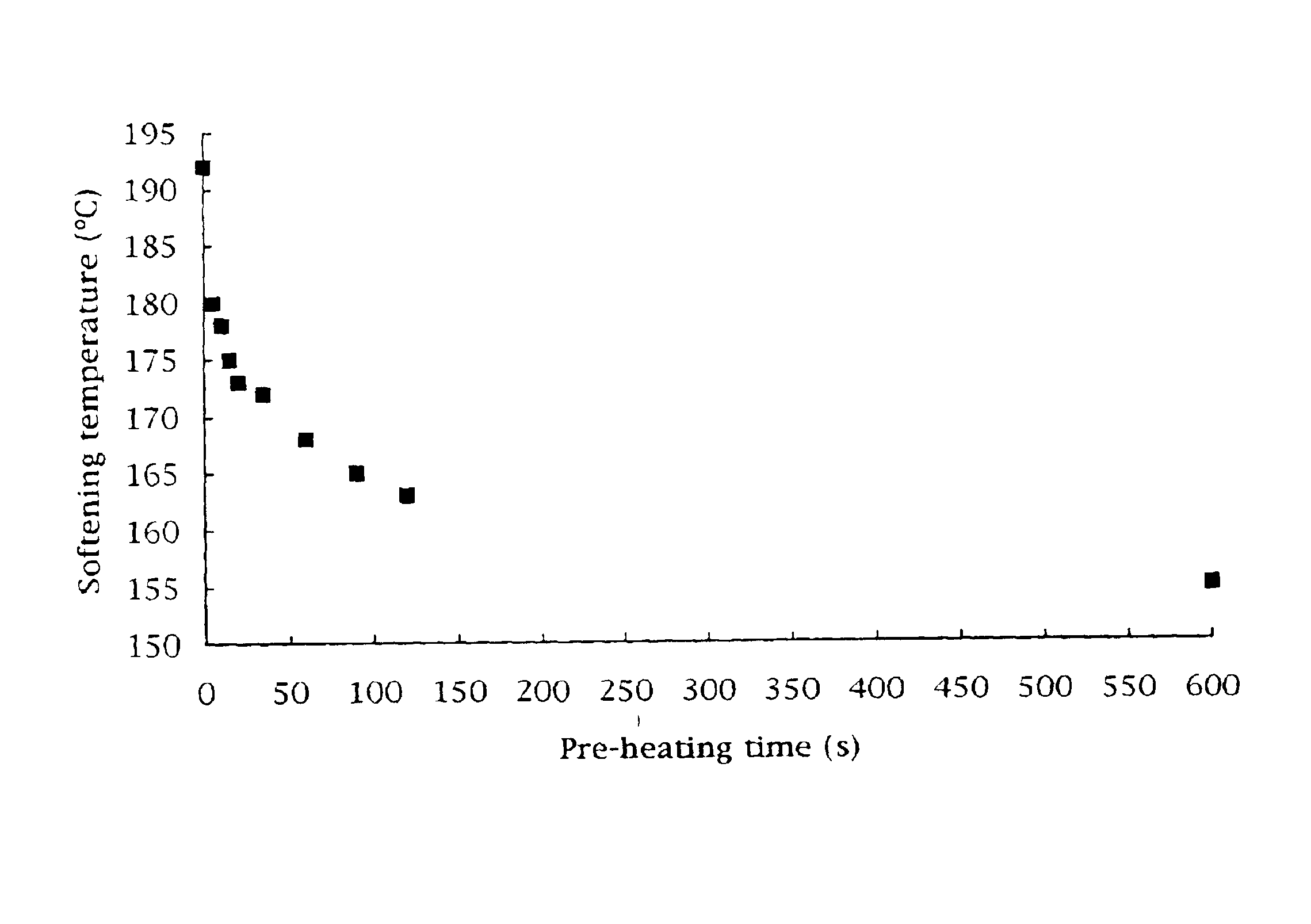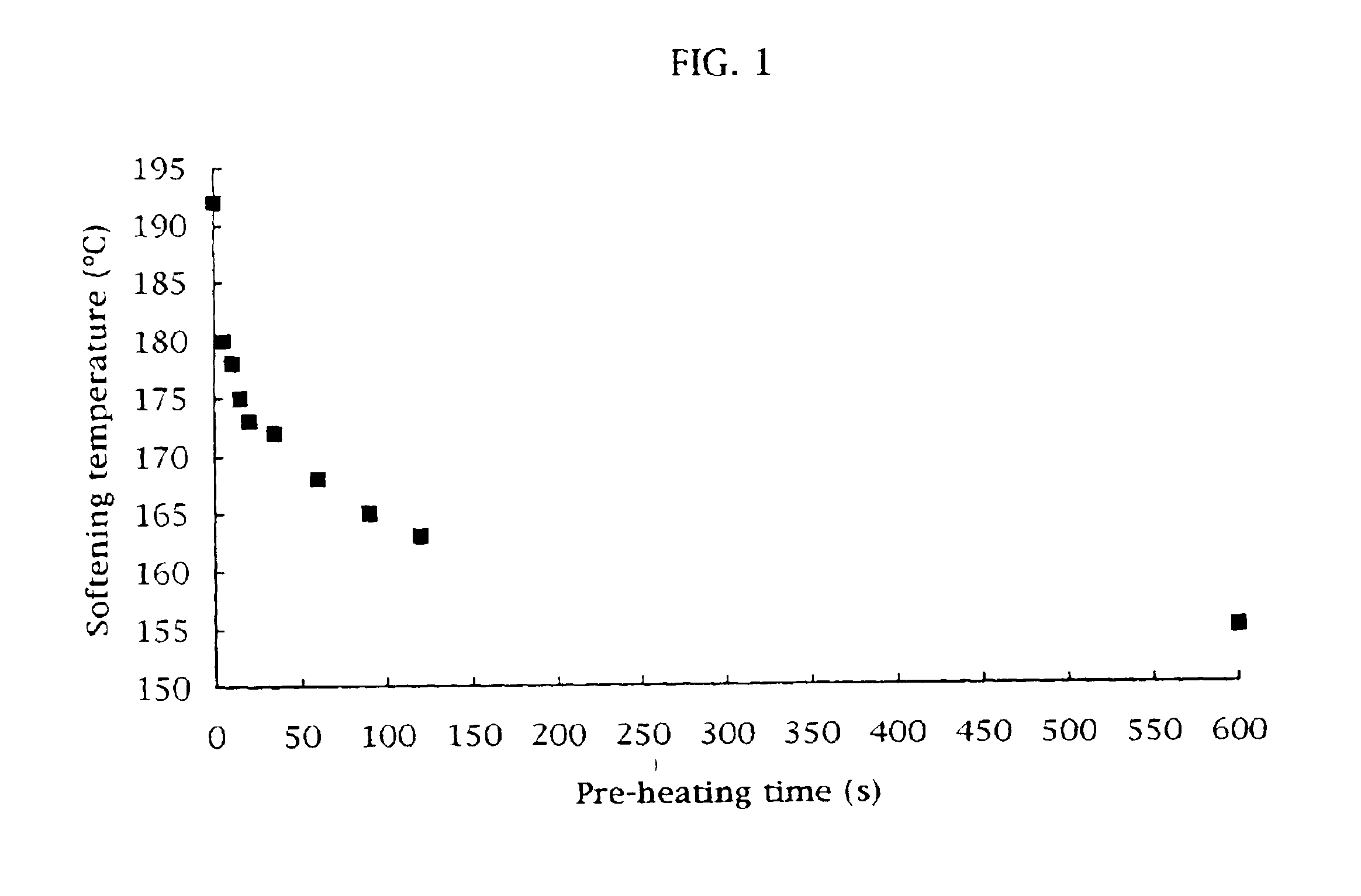Manufacture of copper microalloys
- Summary
- Abstract
- Description
- Claims
- Application Information
AI Technical Summary
Benefits of technology
Problems solved by technology
Method used
Image
Examples
Embodiment Construction
Table 1 shows coppers and copper microalloys produced by semi-continuous casting in an industrial plant by the method proposed, starting from copper scrap that had been fire-refined. Copper microalloys with an Sb content of 20 weight ppm or more and a S content between 3 and 12 weight ppm were cast and rolled with low hot-shortness. Table 2 shows the softening temperatures (defined as the temperature at which the strain strength starts decreasing after 80% cold-working) of the coppers and copper microalloys described in table 1.
Sample 1 is a copper microalloy as described above which showed a rapid pre-heating. FIG. 1 shows that in 10 s of pre-heating, the softening temperature decreased from 192.degree. C. to 178.degree. C., reaching 155.degree. C. after 600 s.
Advantages of the Invention
As described above, the present invention provides a new method for casting and rolling copper and copper microalloys, even with microalloying elements such as S, Se, As, Sb, Bi, Sn, Zn, Ni, Fe, Ag ...
PUM
| Property | Measurement | Unit |
|---|---|---|
| Angle | aaaaa | aaaaa |
| Angle | aaaaa | aaaaa |
| Time | aaaaa | aaaaa |
Abstract
Description
Claims
Application Information
 Login to View More
Login to View More - R&D
- Intellectual Property
- Life Sciences
- Materials
- Tech Scout
- Unparalleled Data Quality
- Higher Quality Content
- 60% Fewer Hallucinations
Browse by: Latest US Patents, China's latest patents, Technical Efficacy Thesaurus, Application Domain, Technology Topic, Popular Technical Reports.
© 2025 PatSnap. All rights reserved.Legal|Privacy policy|Modern Slavery Act Transparency Statement|Sitemap|About US| Contact US: help@patsnap.com


